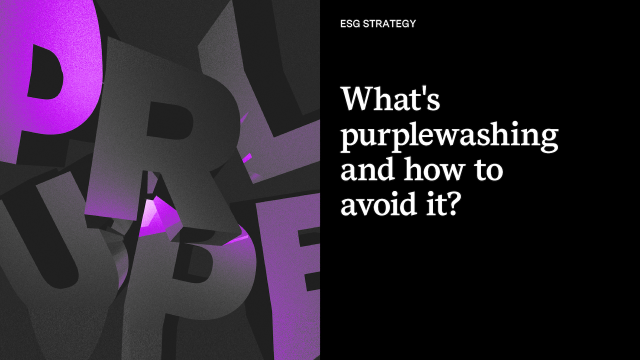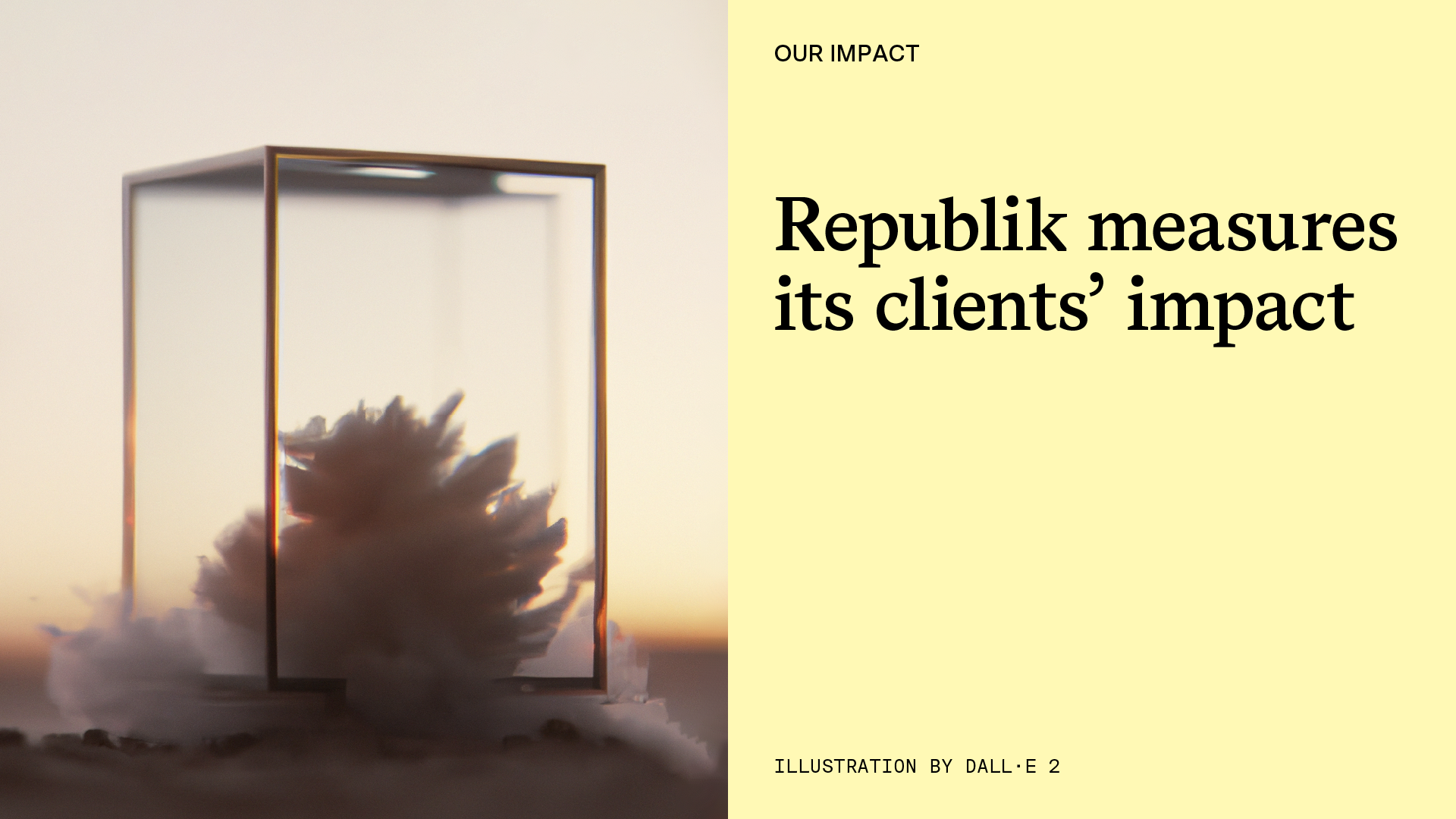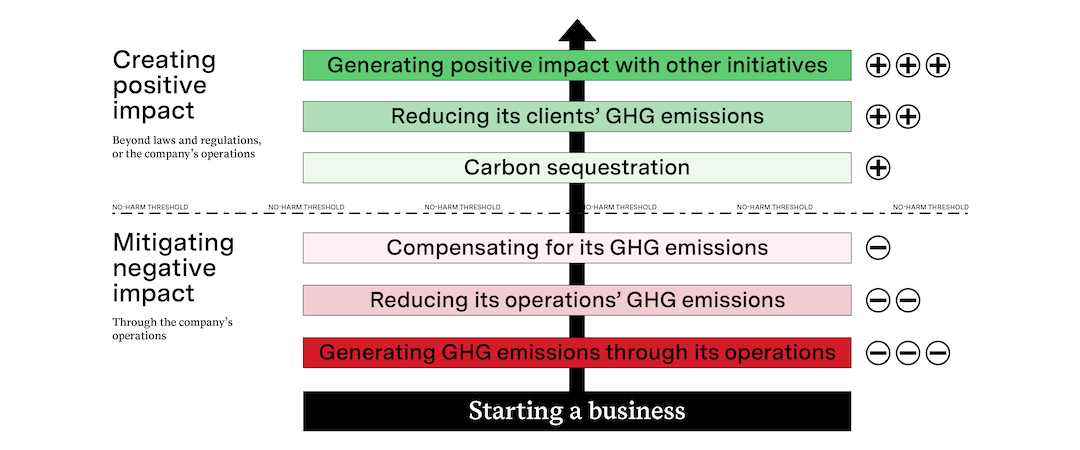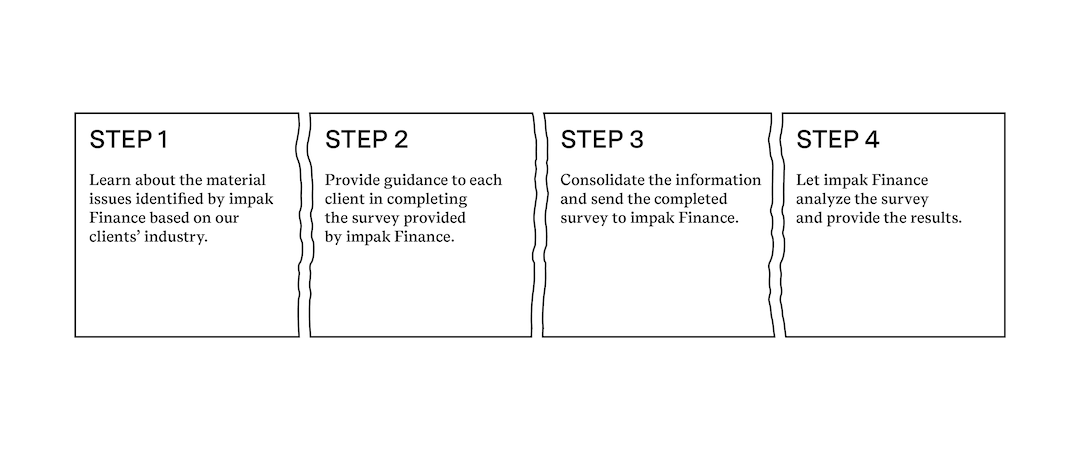
Purplewashing: what is it and how to avoid it?

Before answering the big question that lies at the heart of this article, we need to go back in time a bit. In 2018, Republik committed to working solely with sustainable organizations by 2021. We made this decision because we believe that companies need to start putting their social and environmental impact at the center of their business models.
Back in 2015, we were already interested in looking further than our own profitability, and that’s why we worked hard to receive a B Corp certification—a first among Quebec agencies. This process allowed us to rethink our internal processes, but the potential impact of our actions alone was limited.
We came to the conclusion that our services must generate impact. To get there, we needed to build relationships with companies that shared our values and wanted to head in the same direction.
This observation led to our 2018 commitment and the elaboration of a proprietary methodology: creating social capital. This unique approach combines expertise in branding and design, campaigns, content, ESG strategy, and human resources marketing to ensure that a brand's actions also benefit society and the environment.
Why, in 2023, should we be measuring the potential impact of the companies we work with? Because while we can do everything necessary to improve as an agency, brands represent our biggest lever for impact. We came to this conclusion after calculating Republik’s own greenhouse gas (GHG) emissions.
Our business model, as defined by B Corp, is aimed at improving impact. That means our services must lead to positive changes within other organizations in order to further their social and environmental impact.
In order to make progress, we need a metric that serves as a starting point. Our approach is proactive, so assigning ratings for each of our clients is a first step to establish a baseline that will drive the industry to be more sustainable in the years to come.
In 2015, we wanted to be a better version of ourselves by aligning our internal processes with our first B Corp certification. In 2018, we committed to working exclusively with brands that shared our values to create social capital. In 2023, we’re measuring the impact of the brands we work with in order to establish a reference point for their future improvement.
Before we get into the nitty-gritty, let’s define a few terms. At Republik, potential impact is a positive, sustainable, and measurable change that can be attributed to an organization.
To mitigate negative impacts, we study a company’s activities. An engineering consulting firm could choose to reduce its operations’ GHG emissions after having calculated them and establishing a plan for reduction and compensation, as Republik did. The firm could also do more and try to reduce its production of waste by buying in bulk.
However, to create a positive impact, you need to look beyond the company’s operations and industry standards. For example, the engineering consulting business mentioned above could try and reduce the GHG emissions of its clients by offering them solutions that promote energy efficiency. The firm could go a step further by focusing on carbon sequestration.
Between these two approaches lies the no-harm threshold, which could only be attained if a company ceased its activities.

We collaborated with impak Finance, an agency that provides standardized impact assessments. When seeking out an assessment, it’s always better to use the services of a third party. Moreover, impak Finance's approach is aligned with the international standards of the Impact Management Project (IMP) and the 17 Sustainable Development Goals (SDGs) of the United Nations (UN).
We chose to work with the SDGs, like impak Finance, because they take into account the full range of global issues and are intended for use in every country. They’re part of a truly universal framework. The icon for each goal, and its associated color, facilitates effective communication with our clients. Finally, indicators and targets are already set for each SDG.
Now that we’ve defined the idea of impact and introduced our partner, we can outline the process for measuring the potential impact of our clients. This process consists of four major steps:

The average indicator of potential impact for 12 Republik clients is 1.4 out of 5. At first view, this might seem like a dramatic result. There’s certainly room for improvement, but it was important for us to establish a baseline so that we could compare the evolution of these companies from year to year. Overall, at this time, 30 percent of our clients are having a positive impact.
As previously mentioned, we decided to use SDGs as our framework for a few good reasons, including the fact that they’re used by our partner impak Finance. Together, we analyzed how to mitigate negative impacts and how to create positive impacts for our clients based on the 17 SDGs.
Among the dozen clients we analyzed, 66 actions were identified as reducing the negative impact for a particular SDG.
Twenty percent of our clients took action on SDG 12, which means establishing sustainable methods of production and consumption. The actions associated with this SDG include:
Seventeen percent of our clients acted on SDG 16, which involves peace, justice and effective institutions. The actions associated with this SDG include:
Fifteen percent of our clients acted on SDG 8, which involves dignified work and economic growth. The actions associated with this SDG include:
Thirteen percent of our clients acted on SDG 13, which involves taking immediate action to fight against climate change and its repercussions. The actions associated with this SDG include:
Most of the time, creating a positive impact happens through business models. Of the 30 percent of our clients creating positive impact, one used SDG 12 to develop a business model based on the principles of circular economy. Montreal company LAPS, led by Pierre-Luc Laparé, offers refurbished golf and biking equipment and, while customers are encouraged to sell their used golf and bike equipment to the company in exchange for store credit.
Oatbox, a Quebec brand specializing in oats, created a positive impact through SDG 2—which aims to eliminate hunger, ensure food security, improve nutrition and promote sustainable agriculture—by donating food products to Club des petits déjeuners.
Montreal company TST created positive impact through SDG 6, involving clean and sanitized water, SDG 7, covering clean affordable energy, and SDG 13. This firm specializing in the energy efficiency of buildings counseled clients on how to optimize their energy consumption, which reduced their environmental impact.
Our industry must mobilize because it’s at the forefront of greenwashing. Creative agencies need to take responsibility and ensure truthful communication of their clients’ commitments, without using the word “impact” irresponsibly.
Calculating brands’ potential impact isn’t a perfect process, but it’s a start. We started this process out of conviction, with the only certainty being the desire to improve. In addition to raising awareness among fellow members of our industry, we’ve been able to provide better guidance to our clients by providing them with a roadmap for their own practices and the priorities to be put in place to improve their results. But the key takeaway is that you must have a point of reference. Without one, you can’t move forward. With this baseline, established with the help of impak Finance, Republik is committed to measuring our clients’ progress every two years.
To be honest, we have often had to turn down one out of every three mandates upon realizing that the communication intentions of a brand weren’t based on a desire to improve or on concrete actions. It happens less and less now that many companies are familiarizing themselves with the world of impact and that our expertise is better understood. Plus, it’s rare that companies completely refuse to do better for the planet and society. Often, they simply don’t know where to start. That’s why we offer training and consultations to educate teams on issues relating to their industry.
In the next year, we want to develop a framework for measuring our clients’ impact that combines our two specialties: communication and impact. This way, we’ll have a better picture of the impact generated by brands working with us. Once this social capital index has been created, all of our clients will be asked to evaluate themselves according to this index in order to create a baseline that takes into consideration their communication practices and their impact on the environment and society. This will help us establish a goal for improving our client portfolio.
Never. We’d like to work with companies that want to be part of the solution, not just those that are already perfect. The most important thing for us is to work together with our clients, helping them to become aware of the issues in their industry and to create value for their stakeholders.
It’s important to understand the social and environmental issues specific to your industry, but it’s impossible for any company to address all global issues alone. That’s why you need to choose and prioritize the issues that are relevant to your business. Brands must be creative, convincing, ambitious, and courageous to go beyond compliance. Having an internal resource who is responsible and accountable for the company's social and environmental impact can help improve existing practices by monitoring best practices in the industry. Impact consulting firms, such as Republik, can also help you in this regard. We offer guidance in sustainable development, ESG reporting, B Corp certification, social cause marketing, and strategic philanthropy.
What’s important isn’t the number of goals, but the potential impact that the actions behind these goals can generate. It all depends on the level of ambition of each goal, the human and financial resources available for their implementation, and the measurement and monitoring of the goals. An impact plan makes it easier for us to determine the number of realistic actions to implement since it takes into consideration the company's priorities and the timeframe required for each objective.
When we help our clients prioritize their actions, we fill out a materiality matrix that takes into account the importance of material issues for the company and its stakeholders. In this way, we ensure that the brand's commitment is in synergy with the business opportunities and the expectations of the stakeholders.
According to a survey conducted by the Chamber of Commerce of Metropolitan Montreal in 2022, employees represent the biggest lever of influence on a company's commitment to integrate ESG criteria into its business strategy. There are several opportunities to start a discussion with your manager or co-workers. The job interview is a good time to take the pulse of how committed your future employer is to such issues. Once you’ve been hired, annual evaluations, one-on-one meetings with your manager, team meetings, and internal surveys are also good opportunities. Team management platforms such as Officevibe, which are often anonymous, are also good outlets to share your thoughts.